Are you prepared to enter the exhilarating world of BMX biking? These high-energy bicycles are built for astonishing tricks and breathtaking stunts. However, before you jump onto that slick new BMX bike and dominate the streets, there’s one important question to address: do BMX bikes come equipped with brakes?
Welcome to our blog post, where we will take a deep dive into the exciting realm of BMX bikes and provide you with all the essential information about their braking systems. We’ll cover everything from how these braking systems operate to why certain riders prefer going brakeless. Get ready to embark on a thrilling journey as we unveil the secrets behind brakes on a BMX bike!
What is a bmx bike?
BMX bikes, which stands for Bicycle Motocross, are a unique type of bicycles initially designed for motocross racing. Over time, these bikes have transformed into the preferred option for riders who enjoy executing daring tricks and jumps. They are known for their lightweight and compact design.
The key characteristic that distinguishes BMX bikes from other types of bicycles is their construction. These bikes are built with a strong frame made from durable materials like steel or aluminum, specifically designed to withstand the high impact of landing jumps and executing stunts. What sets them further apart is their smaller size, which allows riders to maneuver more easily in tight spaces. This makes BMX bikes ideal for performing tricks at skate parks or navigating through street obstacles.
One of the defining features of BMX bikes is their simplicity. Unlike road or mountain bikes that come with multiple gears, BMX bikes usually have only one gear ratio. This single-speed setup ensures optimal power transfer when accelerating on ramps or performing aerial tricks.
BMX bikes also come with specially designed tires that provide excellent traction on different surfaces like dirt tracks or concrete ramps. These tires are wide and knobby, offering stability and allowing riders to maintain control even during high-speed maneuvers.

In terms of aesthetics, you’ll often find vibrant colors and eye-catching graphics adorning BMX bike frames. Riders take great pride in customizing their rides with unique paint jobs and accessories that showcase their personal style on two wheels.
Whether you’re a passionate professional rider striving to push boundaries in competitions or someone who simply revels in the exhilaration of soaring through the air on two wheels, a BMX bike guarantees an unparalleled experience of extreme excitement and enjoyment!
What Brakes Do BMX Bikes Have?
BMX bikes are popular among riders who love performing tricks and stunts because of their agility and versatility. As for brakes, there are various options available for BMX bikes.
A popular brake mechanism commonly found on BMX bikes is the U-brake. This system is comprised of two arms that apply pressure to the rim of the wheel when the brake lever is engaged. U-brakes offer excellent stopping power and are often favored by riders who value a highly responsive braking system.
Another commonly chosen option is the caliper brake. These brakes resemble those typically used on road bikes, with a single arm that applies pressure against the rim when engaged. While they offer satisfactory stopping power, they may not be as immediately responsive as U-brakes.
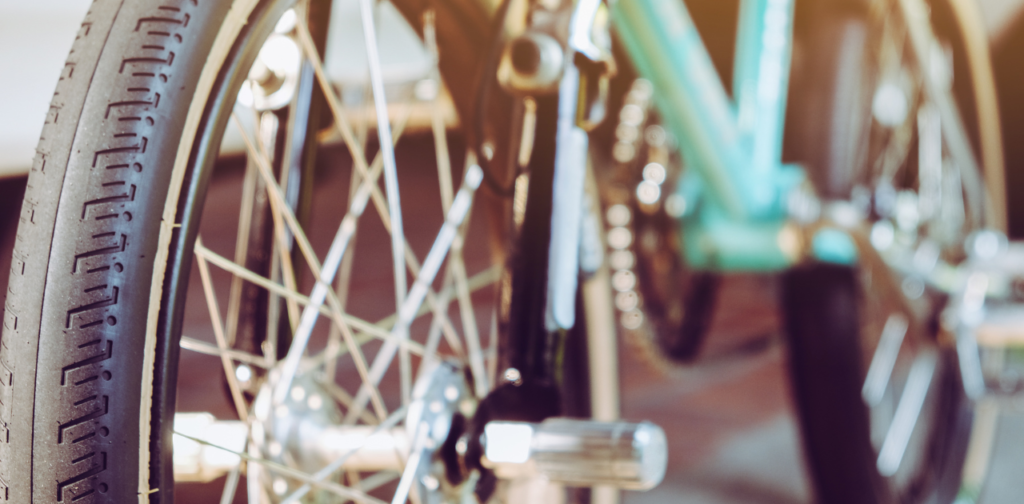
Disc brakes have become increasingly common in BMX biking in recent years. These brakes utilize a rotor mounted to the hub of the wheel and calipers that grip onto it to provide effective braking power. They offer superior control and modulation, particularly in unfavorable conditions like rain or muddy terrain.
When it comes to choosing a brake system, personal preference and riding style are the determining factors. Some riders prefer brakes that are highly responsive, while others prioritize durability or ease of maintenance.
The decision to remove front brakes from BMX bikes is often driven by aesthetics rather than purely functionality. By eliminating the front brake, riders have more flexibility to execute specific tricks or maneuvers that require handlebar rotation.
However, it’s important to remember that removing the front brake of your bike can affect safety in everyday riding scenarios like sudden stops or emergencies. If riders opt not to have a front brake on their BMX bike, they must be cautious and aware.
How Do BMX Brakes Work? BMX Brakes Types
BMX brakes are essential for high-performance bikes, giving riders the ability to control their speed and navigate with precision. There are various types of BMX brakes available, each offering distinct features and benefits.
One of the most popular types of brakes on BMX bikes is the U-brake, also known as the 990 brake. This brake system features two arms that straddle the tire, delivering exceptional stopping power. Riders across different BMX disciplines prefer the U-brake for its reliability and durability.
Another commonly chosen option is the caliper brake, which functions in a similar way to traditional road bike brakes. Caliper brakes utilize a single arm that applies pressure against the rim when the lever is pulled. These brakes provide reliable stopping power but may require more frequent maintenance compared to U-brakes.
Disc brakes have also been introduced in the world of BMX biking. These systems, whether hydraulic or mechanical, utilize a disc rotor that is connected to the wheel hub. When engaged, calipers squeeze against the disc rotor, providing exceptional braking power even in wet conditions. However, it’s worth noting that disc brakes can weigh more compared to other types of brakes.
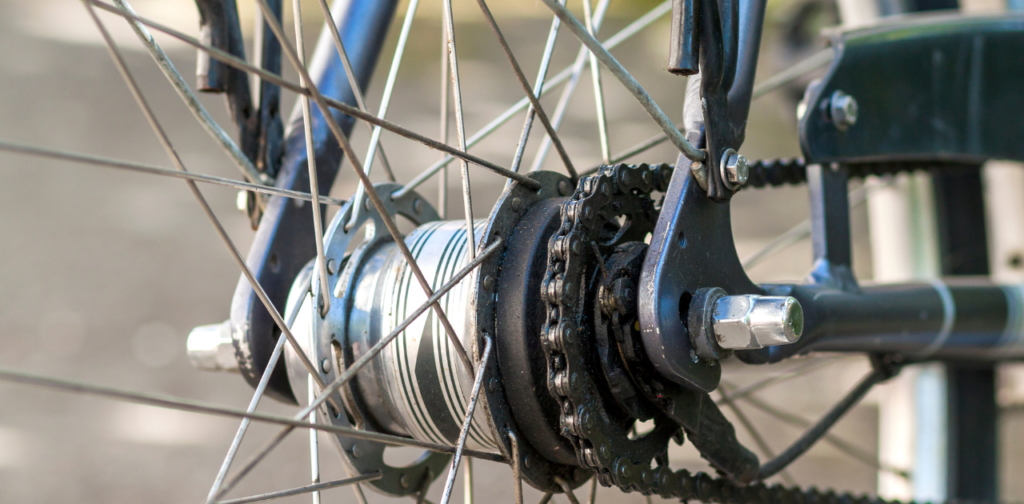
No matter which type of BMX brake system you choose, they all function through the use of friction between pads and rims or discs. When you engage your brake lever, it triggers a mechanism that brings the pads into contact with either the rim or disc surface of your bike. This contact creates resistance, effectively slowing down your speed.
When it comes to choosing a braking system, riders should consider their riding style and personal preferences. For those who prefer a more responsive and powerful braking experience, options like U-brakes or disc brakes are ideal for aggressive tricks or racing. On the other hand, riders who prioritize lightweight equipment may opt for caliper brakes when engaging in freestyle riding.
How do bmx bikes differ from other bikes?
BMX bikes are a breed of their own, designed specifically for the adrenaline-fueled world of extreme sports. What sets them apart from other bikes? Well, let’s dive into the details.
When it comes to BMX bikes, durability is a top priority. These bikes need to be able to handle the intense jumps, tricks, and rough landings that riders put them through. That’s why many BMX bikes feature frames made of steel or chromoly alloy. These materials provide excellent strength without adding unnecessary weight.
A significant distinction lies in the size and shape of BMX bikes. Unlike road or mountain bikes, they feature smaller 20-inch diameter wheels. This design enables greater maneuverability in confined areas and provides increased stability when performing stunts.
In addition, BMX bikes are equipped with a single gear system that includes a freewheel mechanism. Unlike road bikes or mountain bikes, BMX bikes do not have the ability to change gears while riding. This straightforward setup ensures optimal power transfer when accelerating or performing tricks.
Moreover, BMX bikes are equipped with wide handlebars that offer superior control during aerial stunts and maneuvering through obstacles at high velocities. The shorter wheelbase also enhances agility and responsiveness.
An important difference is that most BMX bikes do not have suspension systems. Unlike mountain bikes, which are equipped with suspensions to handle different terrains, BMX riders rely on their body control skills to absorb shocks and impacts while performing jumps.
BMX bikes are known for their versatility within the niche sport. They are not meant to compete with other types of bicycles that serve different purposes, like commuting or long-distance riding. If you’re seeking a thrilling ride filled with excitement and daring tricks, then a reliable BMX bike is the way to go!
Do bmx bikes have brakes?
BMX bikes, also referred to as bicycle motocross bikes, have been specifically engineered for off-road racing and performing stunts. These bikes are highly favored by individuals seeking thrills and enthusiasts of extreme sports. A common query that often arises regarding BMX bikes is whether or not they are equipped with brakes.
Absolutely! BMX bikes do indeed come equipped with brakes. However, the braking system on these bikes differs from what you might find on a regular bicycle. Unlike the typical rim or disc brakes found on road or mountain bikes, most BMX bikes utilize a specific type of brake called a U-brake.
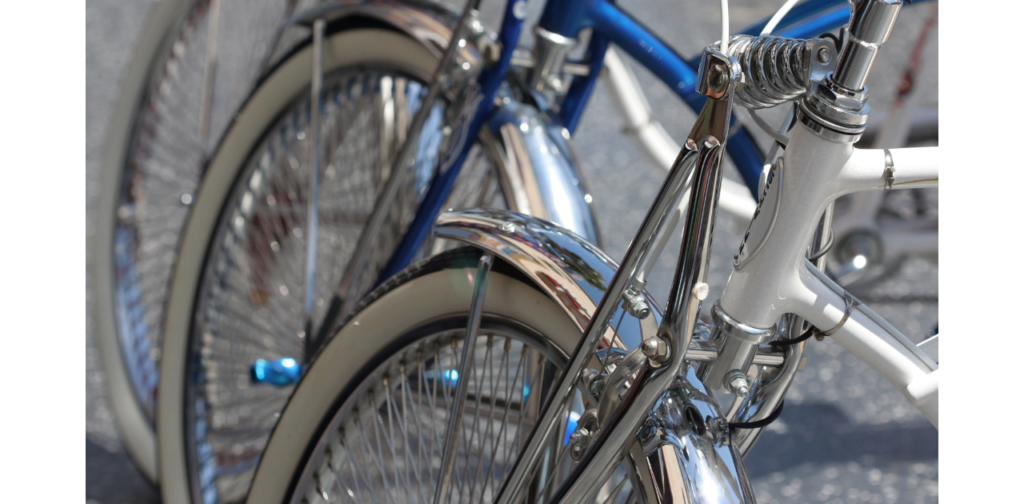
U-brakes are popular among riders who prioritize maneuverability and performing tricks. These brakes are designed to be lightweight and compact, allowing for easy handling. They work by squeezing the wheel against two pads using a cable-actuated mechanism. This design provides ample stopping power while still allowing riders to execute stunts without any hindrance.
But why are front brakes often missing from BMX bikes? The decision to remove them can be attributed to two primary factors: weight distribution and safety considerations. Without a front brake, riders are able to shift their body weight further back during jumps or tricks, enhancing their balance and control over the bike’s movements.
The trend of BMX bike design and brake systems was heavily influenced by its history. In the 1970s, when BMX bikes were first developed for dirt track racing inspired by motocross, they didn’t have any braking system. However, as freestyle riding gained popularity in the 1980s with a focus on aerial maneuvers and tricks, U-brakes became popular due to their compact size and practicality.
To ensure optimal performance and safety while riding a BMX bike with brakes, regular maintenance is crucial. Keep your brake pads clean and free from debris that could affect their effectiveness. Regularly inspect your cables for signs of wear or damage that may require replacement.
Why Don’t BMX Bikes Have Front brakes?
One question that frequently arises when discussing BMX bikes is why they lack front brakes. Unlike traditional bicycles, BMX bikes are typically not equipped with front brakes by design. This deliberate choice serves a specific purpose within the realm of BMX riding.
One of the safety measures taken in the design of BMX bikes is the absence of front brakes. In the high-risk sport of BMX riding, where riders execute intricate tricks and stunts, it’s crucial to maintain precise control over their bike’s movements. Front brakes can potentially disrupt this control by causing sudden nosedives or unexpected flips during certain maneuvers.
Weight reduction is another reason why BMX bikes often omit front brakes. In the world of BMX tricks and jumps, every ounce matters, so removing unnecessary components helps to keep the bike as light as possible.
BMX riders don’t only rely on their front brakes to stop. They utilize their bodyweight and foot placement to brake efficiently. By shifting their weight backward or stomping one foot on the rear tire, they can rapidly reduce speed or bring their bike to a complete stop.
Although BMX bikes may seem unconventional without front brakes, this design choice actually serves a crucial purpose within the sport. It enables riders to have better control and maneuverability while also keeping their bicycles lightweight and agile.
History of BMX Bikes and Brake Systems
The evolution of BMX bikes and their brake systems is a fascinating story that highlights the development of this beloved sport. In its early days, BMX bicycles were typically altered versions of standard bikes, sometimes equipped with coaster brakes or even no brakes at all.
As BMX biking gained popularity in the 1970s and 1980s, manufacturers started creating specialized parts specifically for BMX bikes. These advancements included improvements in brake technology to meet the needs of riders executing daring tricks and racing at thrilling speeds.
A significant innovation in BMX bikes was the introduction of caliper brakes. These brakes utilized a single cable connected to a clamp that would squeeze against the rim when the brake lever was pressed. While they were effective at slowing down or stopping, they had limitations when used heavily or in intense riding conditions.
In their quest for better performance, riders started trying out different types of brakes, such as side-pull caliper brakes and U-brakes. These brake designs provided greater stopping power and improved clearance for trick riding.
Lately, disc brakes have gained popularity in higher-end BMX models. They offer superior stopping power and improved control compared to the traditional rim-based braking systems.
As bike design and rider preferences advance, so does brake technology. Whether you’re a fan of classic caliper brakes or the latest disc systems, there are options available to suit every type of rider.
The evolution of BMX bike brake systems showcases the power of innovative thinking to push boundaries and enhance performance in the thrilling sport of BMX riding.
Tips for BMX Brakes Maintenance
Step 1: Clean and inspect regularly To ensure your BMX brakes function properly, it’s important to keep them clean. After each ride, wipe down the brake pads and rim surfaces to remove any dirt or debris that may have built up. Additionally, make sure to closely inspect the brake pads for signs of wear and replace them if needed.
Step 2: Regular Maintenance As you ride your BMX bike, it’s important to keep an eye on the tension of your brakes. Over time, the cable may need adjustment to ensure optimal performance. Check the cable tension regularly and make any necessary adjustments using the handy barrel adjuster located on either the brake lever or cal

Step 3: Lubricate moving parts Apply a small amount of lubricant to the pivot points and springs of your BMX brakes, ensuring smooth and efficient operation. Take care not to get any lubricant on the braking surface, as this can diminish stopping power.
If you notice significant wear on your brake pads or cables, it’s essential to replace them promptly. Worn brake pads can affect braking performance, and frayed cables can lead to unreliable stopping power.
Step 5: Test your brakes before riding: Before you start riding on the streets or at the skate park, it’s important to test your BMX brakes to make sure they are functioning properly. Simply squeeze both levers firmly and ensure that your brakes have a responsive action when applied.
To ensure your BMX brake system is always in optimal condition for top performance, it’s important to follow these maintenance tips. Not only will this help guarantee your safety, but it will also enhance your overall riding experience. Regular upkeep is key!
How do you stop a bmx bike without brakes?
When it comes to halting a brakeless BMX bike, riders have devised different techniques over the years. One popular approach is known as foot dragging. This involves using your feet to gradually decrease speed and eventually come to a stop. By placing one or both feet on the ground, you can generate friction against the pavement and effectively control your velocity.
Another technique is known as skidding. This involves shifting your weight towards the rear wheel while pushing forward on the pedals, causing the back tire to lose traction with the ground momentarily. The resulting skid helps slow down momentum and bring you to a halt.
For more experienced riders, there are tricks like “stall-outs” or “endos” that can be used for rapid stops. These involve lifting up on the handlebars while simultaneously leaning forward, which shifts the weight onto the front wheel and lifts the back of the bike.
It’s worth mentioning that stopping a BMX bike without brakes takes practice and skill. Riders need to be mindful of their surroundings and anticipate possible dangers to ensure safety during their rides. So whether you decide to ride with or without brakes, always prioritize safety above all else!
How to Stop a BMX Bike Without Brakes?
When it comes to stopping a BMX bike without brakes, riders have developed several techniques. One commonly used method involves using your feet as “brakes.” To execute this technique, you simply place one foot on the ground and drag it along to slow down or bring the bike to a halt. While this maneuver requires practice and balance, many seasoned riders have become proficient in its execution.
Another technique often used in flatland BMX riding is known as the “foot jam.” In this technique, the rider positions their foot against the rear tire to create friction and slow down. This method is particularly useful for executing quick stops and making rapid changes in direction during trick maneuvers.
Experienced riders who are confident in performing aerial maneuvers can also try tricks like “foot plants” or using their legs to grip onto obstacles for additional control and stability.
It’s important to keep in mind that these alternatives for stopping a BMX bike without brakes may not be as reliable as having actual brakes installed. Riders should always prioritize safety and think about installing brakes if they anticipate riding in busy areas or performing more complex maneuvers.
Keep in mind that it takes time and practice to master these techniques. Prioritize your safety by wearing appropriate gear when attempting new tricks or riding without brakes.
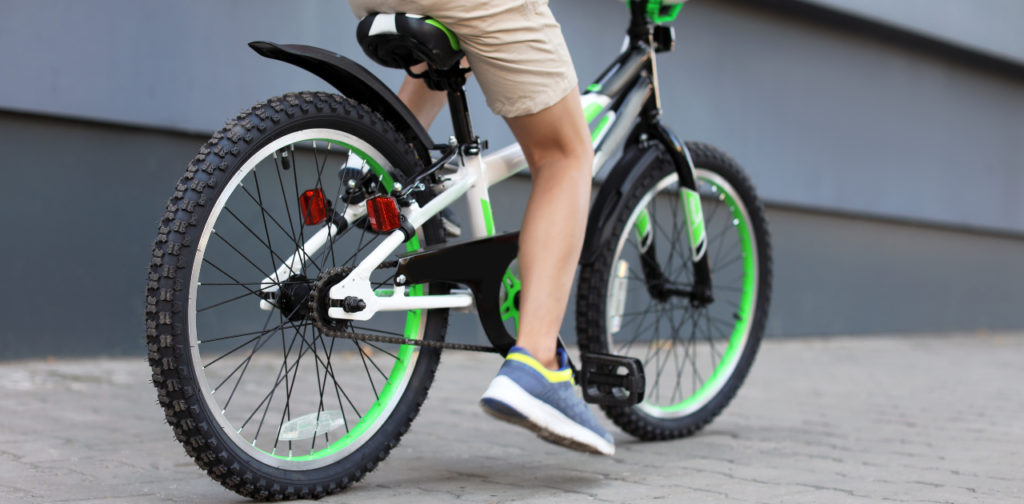
Factors to Consider When Choosing BMX Brakes
When selecting brakes for your BMX bike, it’s crucial to consider a few important factors. The type of riding you intend to do is the primary consideration. Different types of riding necessitate varying brake setups, so it’s vital to choose brakes that are tailored to your specific requirements.
Another factor to consider is the material and construction of the brakes. High-quality materials like aluminum or chromoly will ensure durability and longevity, while lightweight designs can enhance performance.
Braking power is another crucial factor to consider. Some riders may prefer a brake system that is highly responsive and offers greater stopping power, while others might choose a lighter setup that sacrifices some stopping ability in favor of increased maneuverability.
In addition, it’s important to consider the ease of installation and maintenance. Look for brakes that are easy to install and user-friendly, with adjustable or replaceable parts for convenient upkeep.
Your budget can influence your decision-making process when choosing brakes. There are affordable options that provide reliable braking performance, and if you’re willing to invest more, you can find high-end brakes with advanced features.
When selecting BMX brakes, taking these factors into account will help you find the ideal setup that suits your requirements and improves your riding experience without straining your budget.
Maintaining and Adjusting BMX Bike Brakes
Taking care of your BMX bike brakes is essential for both safety and performance. By regularly maintaining and adjusting them, you’ll ensure that they work efficiently and provide the necessary stopping power while riding.
Maintaining the brakes includes a crucial step of checking the condition of the brake pads. Over time, these pads can become worn out and less effective. It is important to regularly inspect their thickness and replace them when needed.
Keeping your BMX bike brakes in good condition also requires regular cleaning. Dirt, debris, and grime can accumulate on the braking surface over time, resulting in reduced braking power. To prevent this, make sure to clean your brakes regularly using a mild detergent or brake cleaner to remove any dirt or residue.
Alongside cleaning, it’s crucial to regularly check the brake cables for any signs of damage or fraying. If you notice any such issues, it’s important to replace the damaged cables immediately to ensure your safety while riding.
To adjust the brakes on your BMX bike, you’ll need to make precise adjustments that allow them to engage with just the right amount of pressure. This ensures that your brakes respond promptly without being overly sensitive or too loose.
To adjust your brakes, begin by tightening or loosening the barrel adjuster near each lever until you feel a comfortable level of tension when squeezing the levers. Remember to periodically make small adjustments as parts naturally wear down or stretch over time.
Keep your BMX bike brakes in optimal condition by regularly maintaining and adjusting them. This will ensure they work properly when you need them most, giving you peace of mind. Always prioritize safety every time you ride!
What are the pros and cons of not having brakes on a bmx bike?
The decision to ride a BMX bike with or without brakes is a debated topic, and there are valid arguments for both options. Let’s delve into the advantages and disadvantages of riding brakeless.
Not having brakes offers a significant benefit in terms of simplicity and weight reduction. By removing brakes, you eliminate extra components, cables, and levers, resulting in a lighter bike that is easier to maneuver. This is especially advantageous for riders who need precise control over their bike’s movements when performing tricks and stunts.
When deciding to ride without brakes, it is crucial to take safety into consideration. Without adequate braking mechanisms, stopping quickly becomes more difficult. This can pose risks in situations where sudden stops are necessary or when riding in crowded areas with pedestrians or other cyclists.
Cyclists who opt to ride without brakes often utilize different methods to slow down or stop their bikes. Techniques like dragging their feet or skidding can offer a certain level of control, but they may not always be dependable in sudden or urgent situations.
Whether or not to ride without brakes is a personal choice that depends on individual preference and skill level. Experienced riders who have mastered the technique of riding without traditional braking systems may find it thrilling and freeing. However, beginners or those who are less confident in their abilities should approach riding without brakes with caution.
It’s worth noting that local regulations regarding bicycle equipment vary from place to place. Before removing your bike’s brakes entirely, make sure you’re aware of any legal requirements pertaining to brake use while cycling.
In conclusion (even though I’m not supposed to say this), riding a BMX bike without brakes offers certain advantages like decreased weight and enhanced maneuverability but also poses safety risks due to limited braking capabilities. It boils down to individual preferences and skill levels when deciding whether or not having brakes is right for you as a rider.
Should I Take the Brakes Off My BMX?
A common question in the world of BMX is whether or not to take off the brakes from your bike. This topic often leads to debates among riders. Some argue that riding brakeless provides a sense of freedom and simplicity, while others prioritize safety and control.
Some riders prefer the thrill and skill of riding without brakes. They enjoy the added challenge of navigating obstacles and performing tricks using only their body weight and balance. It can be quite exhilarating to rely solely on your own abilities and finesse while riding.
However, it’s crucial to acknowledge the potential dangers of riding a bike without brakes. Without brakes, stopping quickly becomes significantly harder, particularly at high speeds or in emergency scenarios. This can result in accidents or collisions that could have been prevented with proper braking systems.
The decision to ride with or without brakes is a personal choice that depends on your skill level, comfort, and individual riding style. If you choose to remove your brakes, it’s important to be extra cautious when riding on public roads or in crowded areas where unexpected incidents can happen.
Are Brakes Necessary On a BMX?
Whether or not brakes are necessary on a BMX bike is a question frequently debated among riders. The answer ultimately depends on your individual riding style and personal preference.
Brakes can be considered advantageous by certain riders, particularly those who navigate urban areas or engage in freestyle maneuvers. The inclusion of brakes grants an additional layer of control and facilitates swift deceleration or stopping when required. Additionally, they assist in accident prevention by enabling riders to more deftly maneuver around obstacles.
On the flip side, there are riders who opt for riding without brakes. This style of biking demands a unique set of skills and relies heavily on body positioning and technique to manage speed. Brakeless riding offers a feeling of liberation and minimalism since there are no cables or levers to contend with.
Deciding whether to have brakes on your BMX bike ultimately depends on personal preference. Factors like your riding style, the terrain you ride on, and your comfort level with controlling speed using techniques other than traditional braking should be taken into consideration.
Safety should always be a priority, whether you choose to have brakes or ride brakeless on your BMX bike. It’s important to wear protective gear like helmets and pads regardless of your braking choice. And remember, practicing and developing your skills is key to becoming confident in whatever decision you make about using brakes on your BMX bike!
Conclusion
Brakes have long been a subject of contention in the BMX biking world. Some riders derive excitement from the unrestricted sensation of riding without brakes, whereas others prioritize safety and control by utilizing them. So, do BMX bikes come equipped with brakes? The answer is yes, but the matter is not as straightforward as it may seem.
In the world of BMX, rear brakes are a standard feature on bikes as they are crucial for stopping and controlling speed. However, front brakes are less commonly found in BMX bikes. This is because many tricks and stunts performed involve manipulating or spinning the handlebars, which can be hindered by front brakes.
Understanding the history of BMX bikes and brake systems helps explain why front brakes are frequently excluded from these bikes. In the early stages of BMX racing and freestyle riding, riders relied solely on their abilities to navigate obstacles and execute tricks without any form of braking mechanism.
Keeping your BMX bike’s brakes in good condition is essential for optimal performance. To ensure that your braking system works smoothly, it’s important to regularly check the brake pads for any signs of wear and tear. Additionally, make sure that the cable tension is properly adjusted and keep all components clean. By following these maintenance steps, you can maintain

Interested in riding a brakeless BMX bike? While it may seem intimidating, there are techniques you can employ to halt without relying on traditional brakes. Some effective methods include foot jams (using your foot against the back tire), sliding out (adjusting body weight distribution), or utilizing obstacles such as walls or ramps.
When deciding on brakes for your BMX bike or contemplating removing them entirely, there are several factors to take into account. These include personal preference, riding style, and any local regulations pertaining to bike equipment requirements.
Before making a decision on whether to ride your BMX bike with or without brakes, it’s crucial to carefully consider the pros and cons.




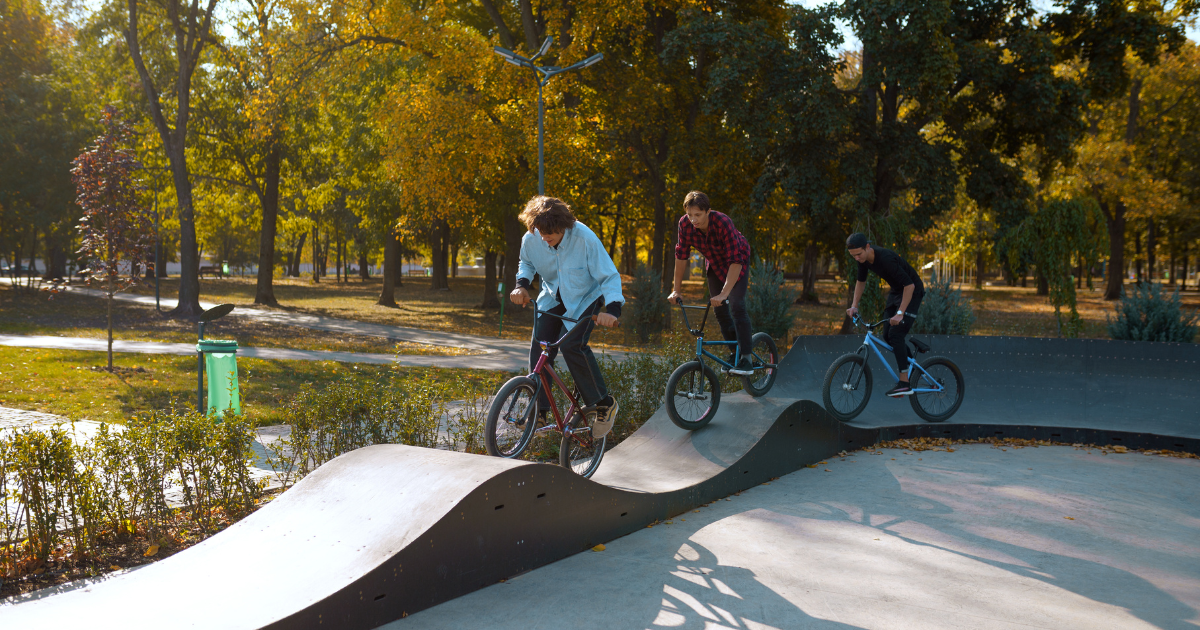

2 thoughts on “Do BMX bikes have brakes?”